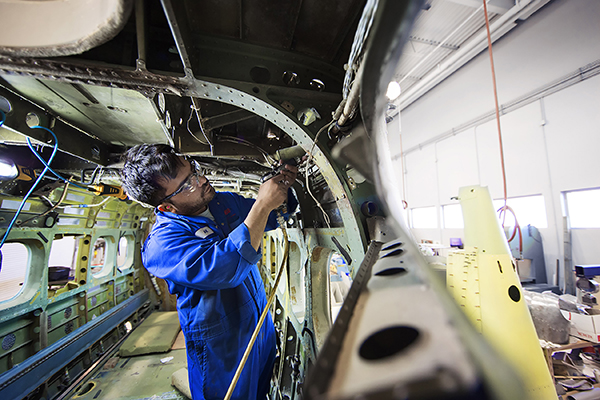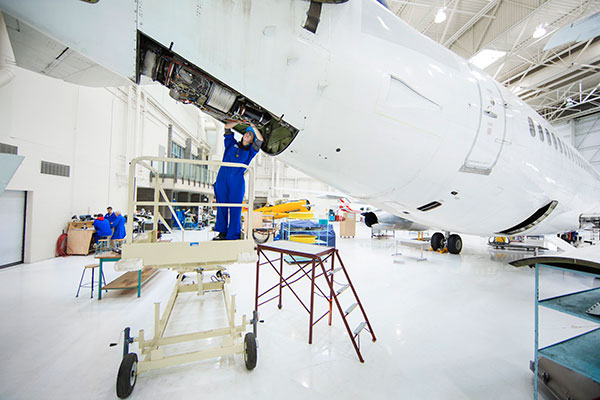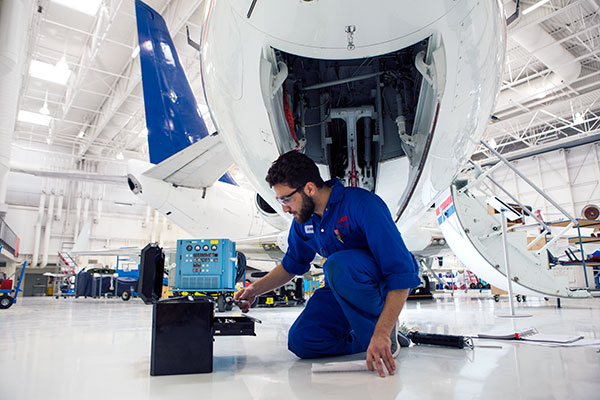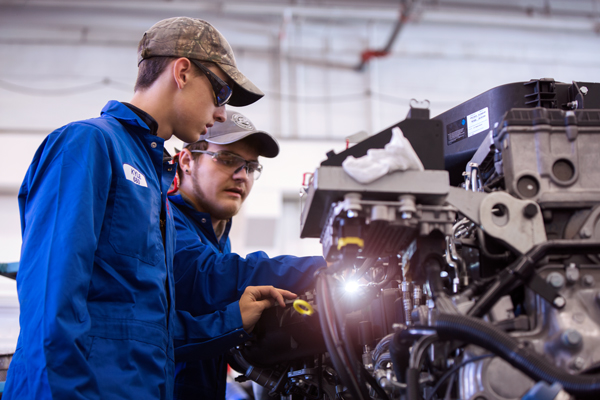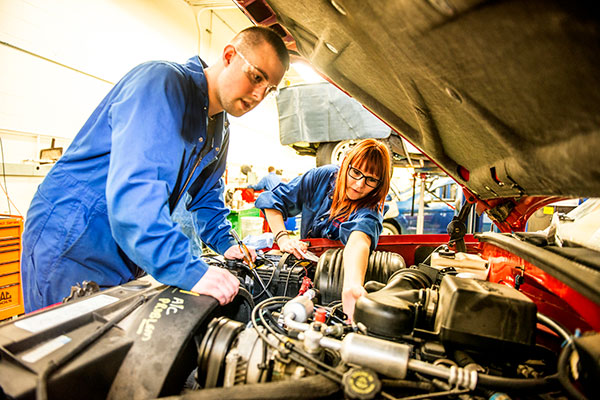On this page:
Overview
The Aircraft Structures Technician program is designed to provide you with the essential knowledge and practical skills needed to forge a successful career as an aircraft maintenance engineer (AME) "S."
You will learn the roles and responsibilities of an AME "S," including the manufacturing and repairing of both aircraft and their components and acquire proficiency in a wide range of repairs needed for general aviation, corporate, charter, and transport category aircraft and helicopters.
In this program, you will learn:
- the fundamentals of aircraft structures, ensuring a solid understanding of the basics
- about the wide range of materials used in aviation, from theory to application
- to craft and mend traditional aluminum sheet metal structures, advancing into composite material manufacturing and adopting the latest technologies in aircraft structure repair
- repair and maintenance techniques specific to aircraft structures, preparing you for hands-on work in the field.
Once you graduate, you're ready to work in the aviation industry and work towards becoming an "S" licensed AME. This program is aligned with the current demands of the aviation industry, ensuring your skills are up to date.
Situated at the Art Smith Aero Centre for Training and Technology at the Calgary International Airport, the program offers a unique learning environment. Benefit from modern computer labs equipped for web-based learning. All required equipment and resources are provided.
This program is a blend of theoretical knowledge and hands-on training within two semesters of study.
Upon completion, you will be fully equipped to take on the challenges of being an aircraft structures technician. This program is a stepping stone to a fulfilling career in aviation.
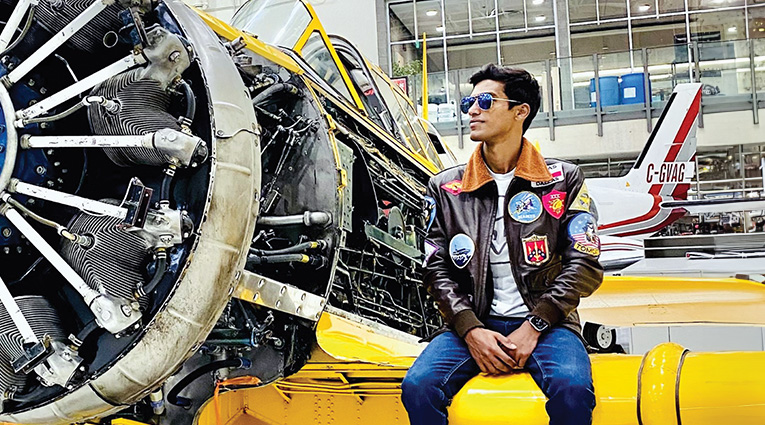
The need for aviation professionals has tripled in the last 20 years and I don’t see a slowdown any time soon.
Lynda Holden, Dean, School of Transportation

Aircraft maintenance engineers tend to be objective, innovative and methodical.
You need:
- good writing and speaking skills
- confidence
- mechanical aptitude
- good eyesight and hearing
- hand-eye and muscle coordination
- fitness and agility for reaching and climbing
- comfort with heights
- organization and time-management skills
- attention to detail
- teamwork skills
- decision-making skills, often under pressure
- spatial and form awareness.
You'll have the opportunity to participate in an industry job shadowing experience, allowing you to experience the aviation industry and work with experienced technicians to gain a better understanding of what your career post-graduation will look like.
During this experience, you will need to meet the safety requirements of the company you will be job shadowing and may need to purchase additional personal protective equipment (PPE) to participate.
This program is accredited by Transport Canada, subject to periodic audits.
To receive ten months of credit towards the Aircraft Maintenance Engineer "S" license, you must attend at least 95% of your classes and labs and achieve minimum overall marks of 70%.
Upon successfully completing this program, you'll recieve a SAIT Aircraft Structures Technician certificate.
Careers and opportunities
Each year, SAIT conducts a survey between February and April to determine the employment rate, salary and satisfaction of our newest SAIT alumni.
![]() 83% graduate employment rate
83% graduate employment rate
![]() $48,589 average starting salary
$48,589 average starting salary
Find out more about our graduate employment statistics >
Our graduates may work in the following occupations. Some careers require additional experience and education.
Associated National Occupational Classification (NOC) codes: 72404, 93200.

Career counselling and support
Unsure which career path is for you? SAIT offers career planning services to help you decide your future.
You can also get started by taking our online career finder quiz, which can help you narrow down your search based on your current skills and interests.
Finally, you can also head to Alberta alis for various tools and resources, including additional quizzes and labour market information to help you narrow down a career path.
Courses
The Aircraft Structures Technician certificate requires 34.5 credits (11 courses) to complete.
The program spans one year, with two semesters per year.
| Course | Credits |
|---|---|
|
In this course, students will practice the care and maintenance of aircraft plastic windows and lenses. This includes performing damage assessments, repair practices, bonding, polishing and thermal forming. They will also measure optical thickness of aircraft windows and study the safe use of applicable chemicals and related equipment. |
1.5 |
|
Students will be introduced to basic theories and shop practices for finishing and repairing aircraft wood and fabric coverings. Characteristics of aircraft woods as well as the safety precautions for using synthetic resin adhesives will be discussed. Properties of various fabrics will be explored and fabric testing performed as students work with fabric and sealer application, study primers and varnishes, as well as practice typical repairs and finishing schemes. The care and use of hand tools and power tools for wood and fabrics will also be addressed. |
3 |
|
This preparatory level course introduces students to the effect of human factors in aviation by highlighting aircraft maintenance errors and mitigation efforts to prevent such errors. Students will use aircraft documents for recordkeeping and track maintenance activities in logbooks, allowing them to incorporate paperwork processes into their work routine. Building increased awareness of human factors in aircraft incidences provides the opportunity to prevent errors by adopting safety precautions that mitigate risk. |
1.5 |
|
This course introduces the broad aspects of aircraft assembly, from descriptions of the woods, fabric coverings and metals used in aircraft structure to an overview of nondestructive testing (NDT) methods used in industry and the impact of corrosion on aircraft. Students will interpret technical material from manuals and service bulletins for specific tasks and explore a variety of aircraft drawings, interpreting the technical information and using a production drawing to identifying material requirements. |
3 |
|
In this wide-ranging course, students will study and practice the care and maintenance of basic aircraft systems. This includes systems addressing ventilation, heating, pressurization, air conditioning, oxygen, fire protection, ice and rain, hydraulics and fuel. They will be introduced to theories that inform air flight, including gas laws, standard atmosphere, Bernoulli's theorem, true air speed and indicated air speed. Students will receive an overview of the principles behind the reciprocating piston and turbine engine including pure jet and turboprop. They will explore plastic windows and lenses - from repairs and damage assessments to the safe use of applicable chemicals and related equipment. |
3 |
|
Canadian Aviation Regulations (CARs) are the regulations and standards for the aircraft industry in Canada. This course provides the learner with a basic understanding of the CARs system as an introduction to accessing and navigating within CARs. The learner will use computer-based learning and classroom theory to develop the skills they will need for using the CARs in a workplace environment. |
1.5 |
|
In this course, you will gain hands-on experience repairing and fabricating aircraft metal structures according to industry standards. Building on your knowledge of theoretical concepts related to aircraft structures, you will also interpret technical drawings, as well as cut, file, drill, rivet and install different types of fasteners. |
6 |
|
In this course, you will get hands-on experience in the fabrication and repair of metal components for aircraft, beginning with installing access doors and inspection panels. You'll examine the use, installation and removal of high-strength fasteners, and practice using them in repairs. You'll also explore aircraft sealing procedures and seal aircraft components. You'll also practice fabricating and repairing structural elements. The course concludes with a final project, where you will perform sheet metal repairs for an aircraft in accordance with specifications and standard practices. |
6 |
|
This course focuses on the fundamentals of composite structures used in aircraft. You will examine the role of composite fibre materials, matrices and adhesives in the structure of modern aircraft, including composite sandwich construction. You'll also explore manufacturing and moulding techniques, as well as pressure applications and curing of composites. The course also includes an examination of inspection and damage assessments, and you'll get hands-on practice fabricating and repairing aircraft composite structures. |
6 |
|
In this course, you'll review important workplace safety regulations and practices, as well as basic mathematics, physics and algebraic calculations. You will examine the theory behind common hand tools, precision measuring tools, power tools, locking devices and control cables. You'll also explore aircraft fluid lines, plumbing, wiring and lightning protection, as well as aircraft marshalling and ground handling procedures. The course concludes with an examination of the relevant sections of the Air Transport Association (ATA) 100 system for aircraft service and maintenance. |
1.5 |
|
In this course, you will review important workplace safety regulations and practices. You'll then apply the theory you have learned previously, getting hands-on experience with common hand tools, precision measuring tools, locking devices and control cables. You'll fabricate aircraft fluid lines and plumbing, and you'll demonstrate wiring techniques such as soldering and crimping. You will also practice aircraft marshalling and ground handling procedures. |
1.5 |
Progression
You must attain a PGPA and/or a CGPA of 2.0 or better each semester and pass the prerequisite courses to progress through the program.
To qualify for graduation, you must pass all courses, attain a CGPA of 2.0 or better and complete course requirements within the prescribed timelines.
Admission requirements
Applicants educated in Canada
Applicants must demonstrate English language proficiency and completion of the following courses or equivalents:
- at least 50% in Math 20-1 or 20-2, and
- at least 50% in English Language Arts 30-1 or 30-2.
SAIT accepts high school course equivalents for admission for applicants educated outside Alberta.
All applicants who were educated outside of Canada must demonstrate English language proficiency and provide proof they meet the program admission requirements with an international document assessment. Find accepted educational documents and assessment options.
SAIT may also accept courses completed at certain international post-secondary institutions.

Academic Upgrading
Missing an admission requirement for this program? Upgrade your prior education to help you receive admission into one of SAIT's career programs.
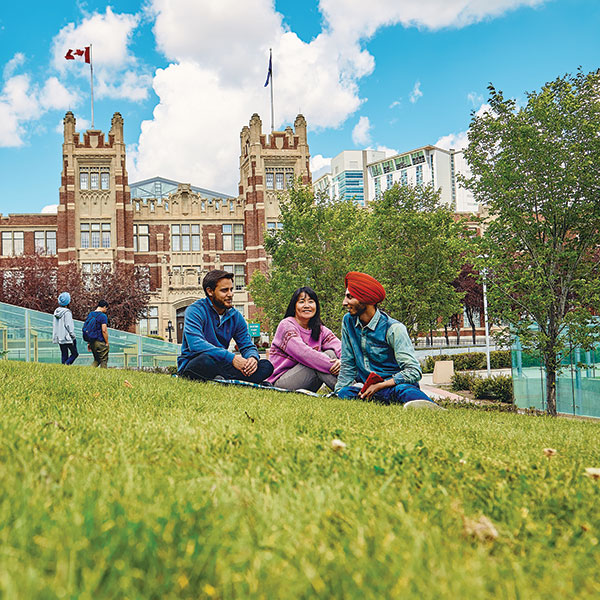
English language proficiency
All applicants must demonstrate English language proficiency prior to admission, including students educated in Canada.
Transfer agreements
At SAIT, we evaluate post-secondary credit you have previously earned and apply it to your SAIT credential. Explore our formal transfer agreements available for this program.
We can evaluate your prior education, even if we don't have a formal agreement in place.
Submit a transfer credit application
There are no formal transfer agreements currently in place for this program.
Transfer options for graduates
Build on the knowledge you’ve learned at SAIT. The opportunity to advance your education at an accredited post-secondary institution may be available.
🔗 Visit Transfer Alberta search tool for all transfer agreements in Alberta (including UCalgary, MRU and BVC).
If there are transfer agreements with other institutions outside of Alberta, nationally or internationally, they will be listed below.
Available intakes
Winter 2025
Start dates:
- Domestic students: Closed
-
-
Application deadline: Oct. 25, 2024
-
- International students: Closed
-
-
Application deadline: Sept. 30, 2024
-
Fall 2025
Start dates:
- Domestic students: Open
-
-
Application deadline: June 30, 2025
-
- International students: Open
-
-
Application deadline: May 30, 2025
-
Costs
2024/25 tuition and fees
The following estimated costs are effective as of July 1, 2024.
Domestic students
Books and supplies are approximately $1,000 - $1,500 per full-time year.
This is a bring-your-own-device program with a standard computer hardware and software requirement. See the specific requirements on our computers and laptops page.
Find your booklist on the SAIT Bookstore's website. The booklist will be available closer to the program start date.
Can't find your program or course? The bookstore didn't receive a textbook list. Contact your program directly to determine if they're still refining course details or if you're in luck; no textbook purchase is required this term.
Required equipment/tools
A tool list and timeline for purchasing the items will be provided at orientation.
Required personal protective equipment (PPE)
Students will require coveralls, safety glasses and a respirator.
The industry-approved PPE you'll need will be discussed during orientation, where you can purchase these items using debit or credit.

Financial aid
Paying for your education may feel overwhelming, but we have resources and programs that can help, including information about payment options, student loans, grants and scholarships.
Application process
Ready to apply?
Follow our step-by-step guide to submitting a successful application.
Communication during admission
Email is the primary source of communication during the selection process. Ensure your personal email account is managed appropriately to receive our emails, files and communications. We recommend you add the transportation.info@sait.ca domain to your safe senders list or you risk missing critical email messages.
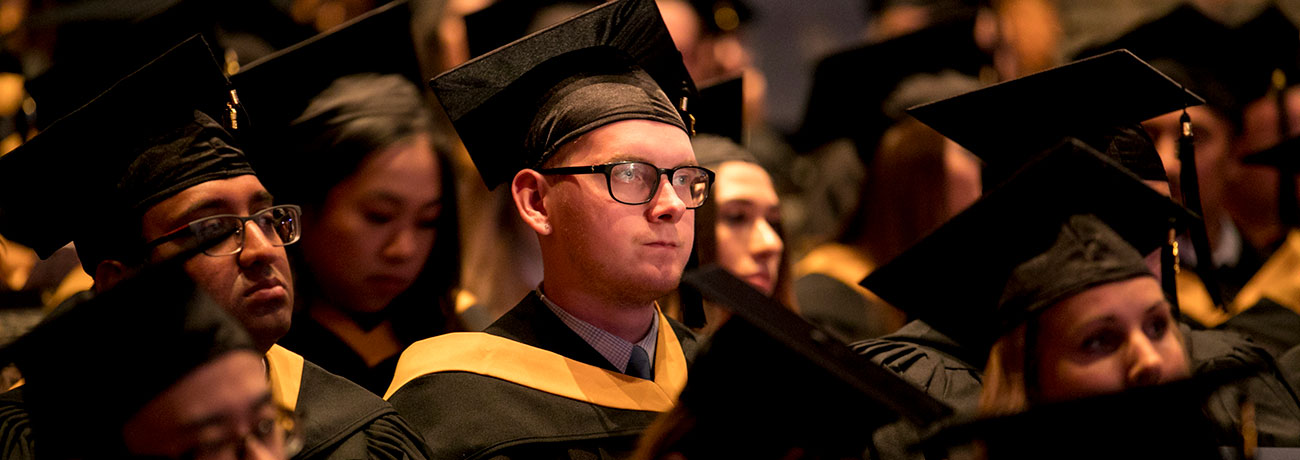
Begin your application
Apply now using the online application portal.
Ensure you have a valid Visa or Mastercard to pay the non-refundable application fee of $120 for domestic applicants or $175 for international applicants.
Information sessions
Prepare for a strong start in your chosen program or get the details you need to decide your future path.
Our expert staff and faculty are ready to answer your questions and provide information about the following:
- What sets SAIT apart
- An introduction to the program and area of study
- Admission requirements
- Future career paths
- Information on the earning potential and graduate employment rates.
Contact us
School of Transportation Advising
-
Phone - 403.284.8471
International Student Advising
-
Phone - 403.284.8852
-
Email - international@sait.ca
Subscribe for updates
Your journey starts here! Sign up to get important updates on:
- Construction, transportation and manufacturing programs
- Application information
- Relevant news and events

Oki, Âba wathtech, Danit'ada, Tawnshi, Hello.
SAIT is located on the traditional territories of the Niitsitapi (Blackfoot) and the people of Treaty 7 which includes the Siksika, the Piikani, the Kainai, the Tsuut’ina and the Îyârhe Nakoda of Bearspaw, Chiniki and Goodstoney.
We are situated in an area the Blackfoot tribes traditionally called Moh’kinsstis, where the Bow River meets the Elbow River. We now call it the city of Calgary, which is also home to the Métis Nation of Alberta.
